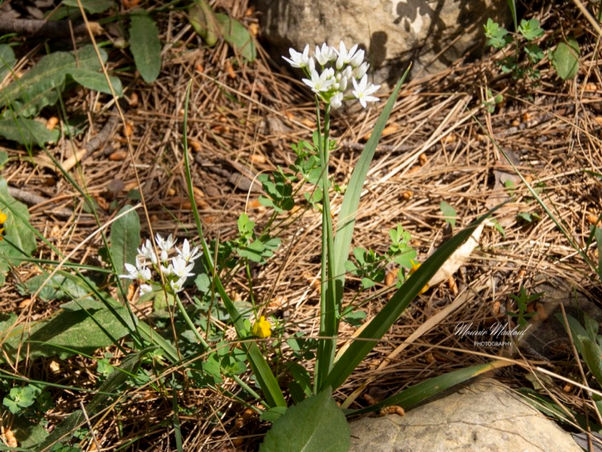Family |
Amaryllidaceae
Allium trifoliatum
Cirillo
Allium trifoliatum Cyr.
(Nouvelle Flore du Liban et de la Syrie, vol. 1, Pl. LXXXVIII nº 3–5; 1966)
Life-form & habit : Bulbous perennial onion; scape cylindrical, smooth and glabrous, 10 – 50 cm tall, bearing foliage only near the ground.
Bulb : Ovoid to sub-globose, often very small; inner tunics white-membranous, outer tunics grey, crustaceous and fragile, sometimes producing bulbils.
Leaves : Usually three (2 – 4) blades, narrowly linear (occasionally broad-linear), sharply pointed, keeled and shorter than or scarcely exceeding the umbel; surfaces glabrous, but leaf margins may be ciliolate near the base; sheaths very often hispid.
Spathe : Single membrane that splits into 2 – 3 short lobes; always shorter than the umbel.
Inflorescence : Hemispherical, occasionally spherical, with few to many flowers; umbel diameter varies from < 2 cm to 5 – 6 cm. Pedicels unequal—sometimes just longer than the perianth, sometimes 2 – 3 × longer.
Perianth : Tepals oblong, free or scarcely united at the very base, sub-acute; pure white but marked by a more or less pronounced purplish mid-vein, 5 – 6 mm long.
Stamens : Filaments exceed roughly half the perianth length; anthers yellow-brown and at least two-thirds as long as the filaments.
Capsule : Rounded-trigonous and protrudes slightly beyond the withered perianth.
Flowering period : March – May.
Habitat : Stony ground and open rocky soils.
Distribution (Lebanon & Syria) : Frequent from the coastal plain of Beirut and Tripoli to mid-mountain stations such as Beit Méri, Bikfaya, Ehden, Terbol, Jabal Sannine and the southern Beqaa; also recorded in western Syria from Aleppo, Khan Cheikhoun and the Damascus environs.
Native range : Italy, Cyrenaica, Egypt and the eastern Mediterranean littoral from Palestine northwards.









